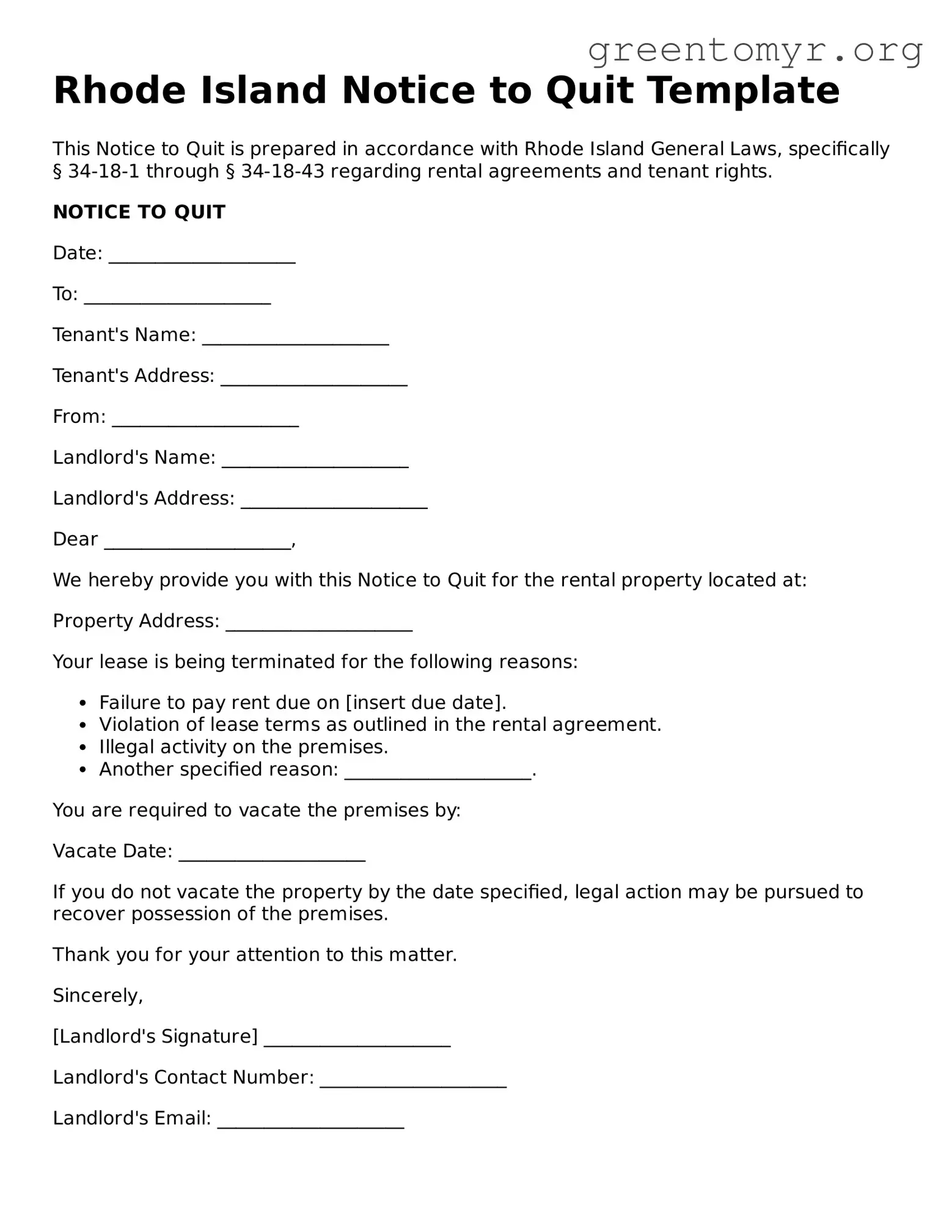Rhode Island Notice to Quit Template
This Notice to Quit is prepared in accordance with Rhode Island General Laws, specifically § 34-18-1 through § 34-18-43 regarding rental agreements and tenant rights.
NOTICE TO QUIT
Date: ____________________
To: ____________________
Tenant's Name: ____________________
Tenant's Address: ____________________
From: ____________________
Landlord's Name: ____________________
Landlord's Address: ____________________
Dear ____________________,
We hereby provide you with this Notice to Quit for the rental property located at:
Property Address: ____________________
Your lease is being terminated for the following reasons:
- Failure to pay rent due on [insert due date].
- Violation of lease terms as outlined in the rental agreement.
- Illegal activity on the premises.
- Another specified reason: ____________________.
You are required to vacate the premises by:
Vacate Date: ____________________
If you do not vacate the property by the date specified, legal action may be pursued to recover possession of the premises.
Thank you for your attention to this matter.
Sincerely,
[Landlord's Signature] ____________________
Landlord's Contact Number: ____________________
Landlord's Email: ____________________
